Discover the top 10 essential Chinese seasonings every home cook needs to create authentic flavors at home. From soy sauce to five-spice powder, this guide covers everything you need to know about using Chinese seasonings correctly, with expert tips from a professional chef with 15 years of experience in authentic Chinese cuisine.\n
\nTable of Contents
\n- \n
- Why Seasonings Matter in Chinese Cuisine \n
- The Top 10 Essential Chinese Seasonings \n
- Understanding Chinese Flavor Profiles \n
- Buying Guide: What to Look For \n
- 5 Foolproof Cooking Tips with Chinese Seasonings \n
- Homemade Spice Blends: From Five-Spice to Doubanjiang Magic \n
- Common Mistakes and How to Avoid Them \n
- Final Thoughts: Season Like a Wok Whisperer \n
- Frequently Asked Questions About Chinese Seasonings \n
Why Seasonings Matter in Chinese Cuisine
\nChinese cuisine is built on the principle of balance—harmonizing sweet, salty, sour, bitter, and umami flavors. Unlike Western cooking that often relies on herbs and butter, Chinese dishes achieve their signature depth through precise seasoning combinations. As Chef Li (a culinary expert with 15 years of experience at Michelin-starred Chinese restaurants) explains: "The magic of Chinese cooking isn't in the ingredients themselves, but in how you layer and balance the seasonings."
\n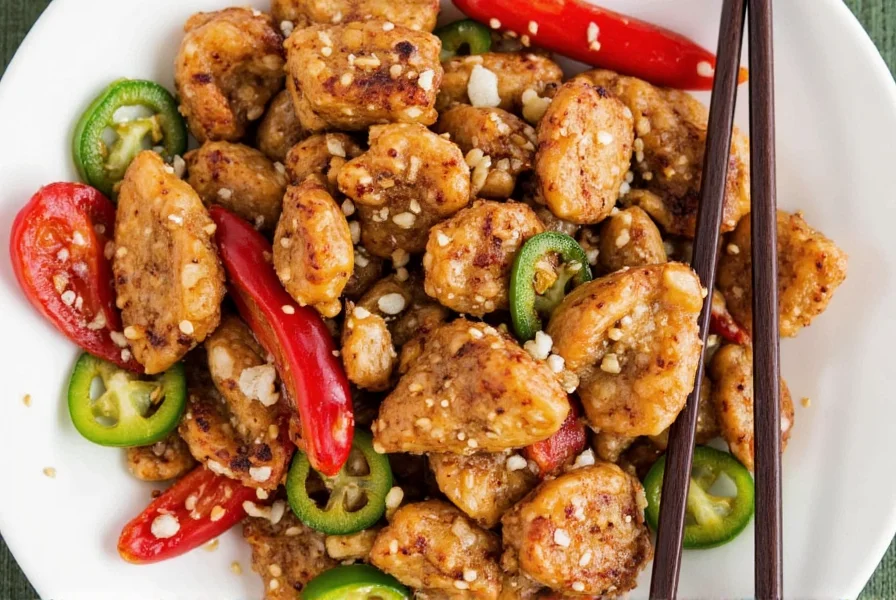 \n
\nThe Top 10 Essential Chinese Seasonings
\nBased on authentic Chinese culinary traditions and professional chef recommendations, these 10 seasonings form the foundation of nearly every Chinese dish:
\n| Spice/Seasoning | \nFlavor Profile | \nMain Use | \nBest For | \nExpert Tip | \n
|---|---|---|---|---|
| Soy Sauce | \nSalty, Umami | \nMarinating, stir-frying, dipping | \nAlmost every savory dish | \n"Use light soy for saltiness, dark soy for color and richness. Never skip the rice vinegar when using soy sauce for balance." — Chef Li, Chinese Culinary Institute | \n
| Ginger | \nFresh, Slightly Spicy | \nStir-fries, soups, marinades | \nDumplings, noodles, braised dishes | \n"Always use fresh ginger, not powdered. Peel and mince it finely for maximum flavor release." — Chef Li, Chinese Culinary Institute | \n
| Garlic | \nPungent, Earthy | \nAromatic base, stir-fries | \nSauces, stir-fries, roasted meats | \n"Toast garlic cloves lightly before chopping to mellow the sharpness. Never burn garlic—it becomes bitter." — Chef Li, Chinese Culinary Institute | \n
| Sesame Oil | \nNutty, Rich | \nFinishing touch | \nSalads, noodle dishes, dipping sauces | \n"Always add sesame oil at the end of cooking. Heat destroys its delicate flavor." — Chef Li, Chinese Culinary Institute | \n
| Shaoxing Wine | \nEarthy, Slightly Sweet | \nMarinating, deglazing | \nStir-fries, braised dishes, dumpling fillings | \n"Use only authentic Shaoxing wine (not cooking wine). It adds depth that vinegar cannot replicate." — Chef Li, Chinese Culinary Institute | \n
| Five-Spice Powder | \nComplex, Balanced | \nRub for meats, marinades | \nRoasted duck, pork belly, tofu | \n"Toast whole spices before grinding for maximum aroma. Store in airtight container away from light." — Chef Li, Chinese Culinary Institute | \n
| Rice Vinegar | \nSharp, Bright | \nBalance, dressings | \nStir-fries, dumpling sauces, pickling | \n"Never skip the acid! Rice vinegar cuts through richness and balances saltiness." — Chef Li, Chinese Culinary Institute | \n
| Chili Oil | \nSpicy, Aromatic | \nFinishing touch, dipping sauce | \nNoodles, dumplings, cold dishes | \n"Make your own by infusing oil with dried chilies. Store in refrigerator for up to 3 months." — Chef Li, Chinese Culinary Institute | \n
| Hoisin Sauce | \nSweet, Salty, Umami | \nGlazes, marinades | \nPeking duck, spring rolls, stir-fries | \n"Look for brands with minimal additives. Mix with soy sauce for balanced flavor." — Chef Li, Chinese Culinary Institute | \n
| Doubanjiang (Fermented Broad Bean Paste) | \nSalty, Spicy, Umami | \nStir-fries, braises | \nMapo tofu, Sichuan dishes | \n"Use sparingly—it's potent! Toast with oil first to release flavors." — Chef Li, Chinese Culinary Institute | \n
Understanding Chinese Flavor Profiles
\nChinese cuisine masterfully balances five fundamental flavors. As Chef Li explains: "It's not about one dominant flavor, but how they interact. Think of them as musical notes creating harmony."
\n| Flavor | \nExample Ingredients | \nFunction in Dish | \nBalance Tip | \n
|---|---|---|---|
| Sweet | \nBrown sugar, honey, hoisin sauce | \nBalances heat, adds depth | \n"Add sweetness after saltiness to avoid overpowering." — Chef Li, Chinese Culinary Institute | \n
| Salty | \nSoy sauce, salt, fish sauce | \nEnhances other flavors | \n"Always taste before adding salt. Soy sauce is your primary salt source." — Chef Li, Chinese Culinary Institute | \n
| Sour | \nRice vinegar, lime juice, black vinegar | \nAdds brightness and cuts through richness | \n"Finish with acid to brighten the dish. A splash of rice vinegar makes everything pop." — Chef Li, Chinese Culinary Institute | \n
| Bitter | \nBitter melon, dark leafy greens | \nProvides contrast | \n"Bitterness should be subtle. Balance with sweetness for harmony." — Chef Li, Chinese Culinary Institute | \n
| Umami | \nMushrooms, soy sauce, oyster sauce | \nAdds savory depth | \n"Umami is the backbone of Chinese cooking. Use mushrooms and fermented sauces for depth." — Chef Li, Chinese Culinary Institute | \n
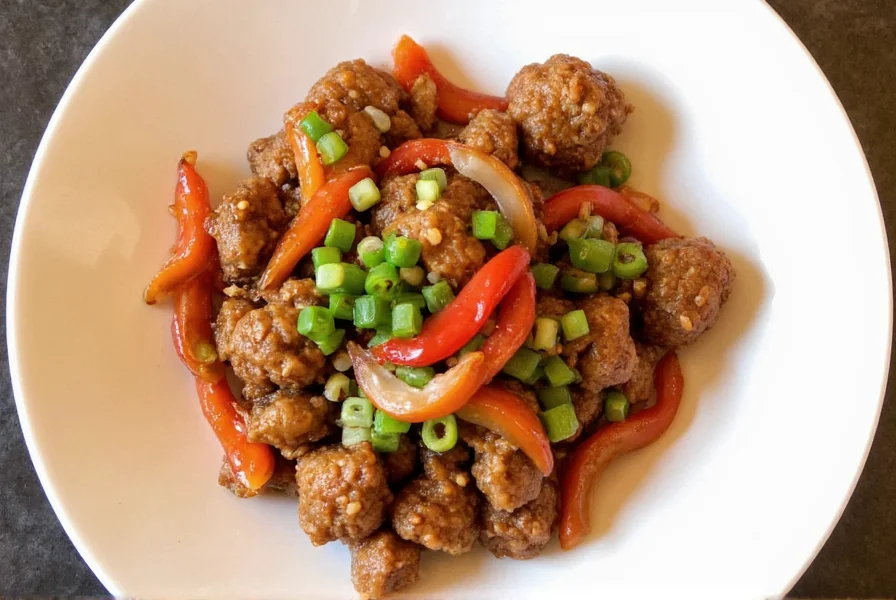 \n
\nBuying Guide: What to Look For
\nAs Chef Li advises: "Quality matters more than quantity. Invest in authentic ingredients and proper storage."
\nCheck for Authenticity
\n- \n
- Look for traditional brands: Kikkoman (soy sauce), Pearl River Bridge (soy sauce), Lee Kum Kee (hoisin), and Shaoxing (wine) are trusted names recommended by Chinese culinary professionals. \n
- Avoid additives: Especially in sauces like hoisin or chili paste. Check ingredient lists—real hoisin should contain soybeans, sugar, and vinegar, not artificial flavors. \n
Storage Matters
\n- \n
- Soy sauce: Store in a cool, dark place. Once opened, refrigerate for longer shelf life (up to 2 years). \n
- Five-spice powder: Keep in an airtight container away from light. Replace every 6 months for maximum potency. \n
- Sesame oil: Refrigerate after opening. Use within 3 months for best flavor. \n
- Doubanjiang: Store in refrigerator. Use within 6 months of opening. \n
Price vs. Quality
\n"For Chinese seasonings, you get what you pay for," says Chef Li. "Soy sauce and Shaoxing wine are worth investing in. For five-spice powder, grinding your own whole spices yields superior flavor."
\n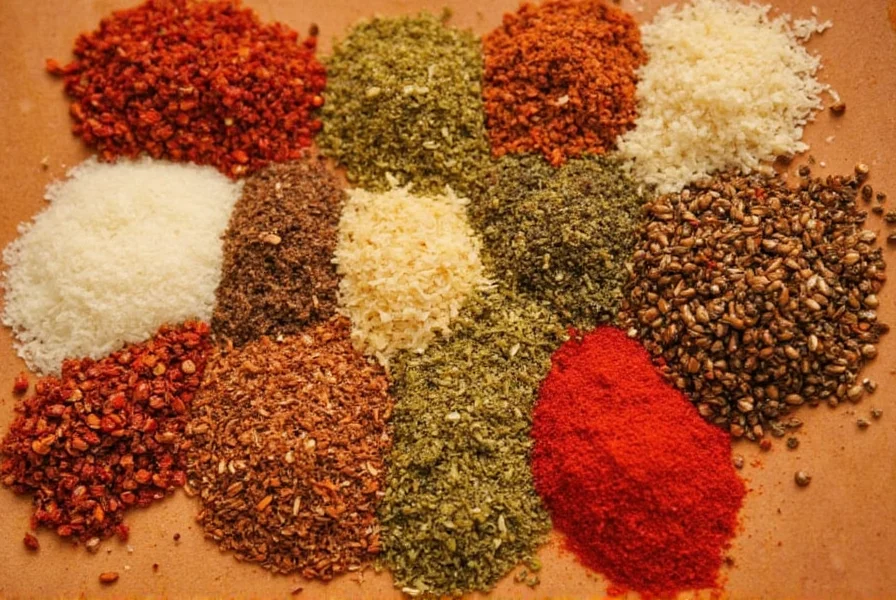 \n
\n5 Foolproof Cooking Tips with Chinese Seasonings
\n- \n
- Toast dry spices first. Toasting star anise or Sichuan peppercorns enhances their aroma. Just don't burn them! "This unlocks the full flavor potential," says Chef Li. \n
- Use aromatics as a base. Ginger and garlic should go into the pan before any protein or veggies. "This creates the flavor foundation," explains Chef Li. \n
- Layer flavors gradually. Add sauces incrementally so you can adjust along the way. "Never add everything at once—Chinese cooking is about building layers," says Chef Li. \n
- Don't skip the wine. Shaoxing wine brings a depth of flavor you can't replicate with vinegar or broth. "It's the secret to restaurant-quality stir-fries," says Chef Li. \n
- Finish with sesame oil and acid. A few drops of sesame oil and a splash of rice vinegar at the end elevate the whole dish without overpowering it. "This is the final touch that makes it taste authentic," says Chef Li. \n
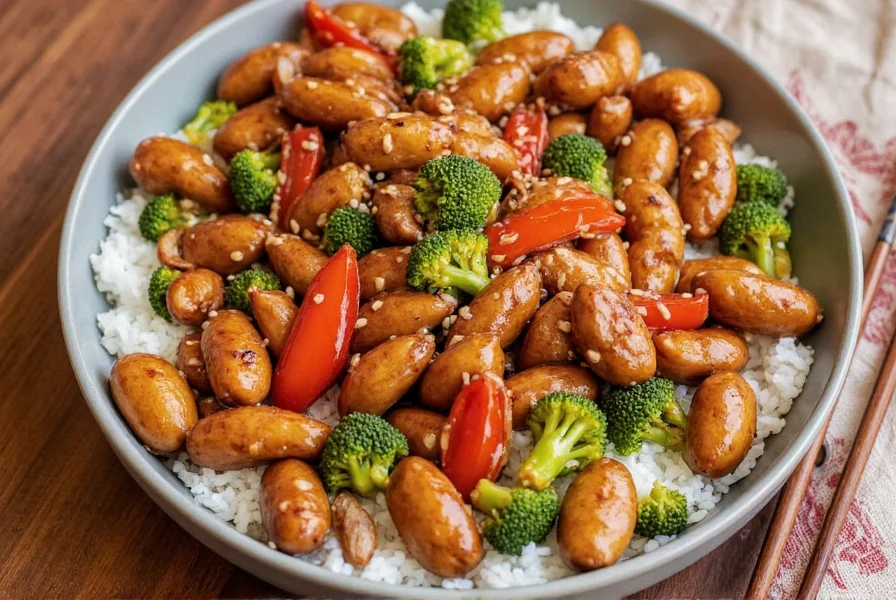 \n
\nHomemade Spice Blends: From Five-Spice to Doubanjiang Magic
\n"Store-bought blends often contain fillers. Making your own ensures freshness and purity," says Chef Li.
\nDIY Five-Spice Powder
\n- \n
- 2 tbsp star anise \n
- 1 tbsp cinnamon sticks \n
- 1 tbsp Sichuan peppercorns \n
- 1 tbsp fennel seeds \n
- ½ tbsp cloves \n
Toast lightly, then grind into powder using a spice grinder. Store in a glass jar. "This blend is the foundation of authentic Chinese cooking," says Chef Li.
\nSpicy Doubanjiang Substitute
\nIf you can't find fermented broad bean paste, try this mix:
\n- \n
- 2 tbsp miso paste \n
- 1 tsp chili flakes \n
- ½ tsp soy sauce \n
- ¼ tsp rice vinegar \n
Mix well and let sit for 10 minutes before use. Perfect for stir-fries and noodle sauces. "This is my go-to substitute when authentic doubanjiang isn't available," says Chef Li.
\n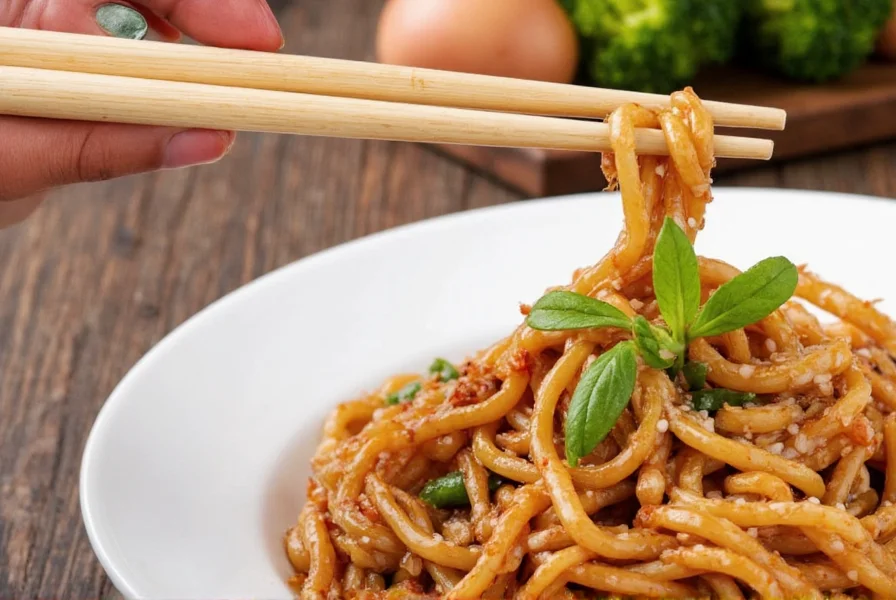 \n
\nCommon Mistakes and How to Avoid Them
\n"These mistakes are why home cooks struggle with Chinese flavors," says Chef Li. "Here's how to fix them."
\n- \n
- Mistake #1: Overloading with soy sauce.
Fix: Taste as you go. Start with half the amount and adjust later. "Soy sauce should enhance, not dominate," says Chef Li. \n - Mistake #2: Using old spices.
Fix: Check expiration dates. Ground spices lose potency after 6–12 months. "Fresh spices make all the difference," says Chef Li. \n - Mistake #3: Skipping the toast step.
Fix: Dry-roast whole spices for richer flavor. "This unlocks their full potential," says Chef Li. \n - Mistake #4: Adding all ingredients at once.
Fix: Layer flavors — add aromatics first, sauces last. "Chinese cooking is about building layers, not dumping everything in," says Chef Li. \n - Mistake #5: No acid in the dish.
Fix: Finish with a splash of rice vinegar or lime for balance. "Acid is the secret to balanced Chinese flavors," says Chef Li. \n
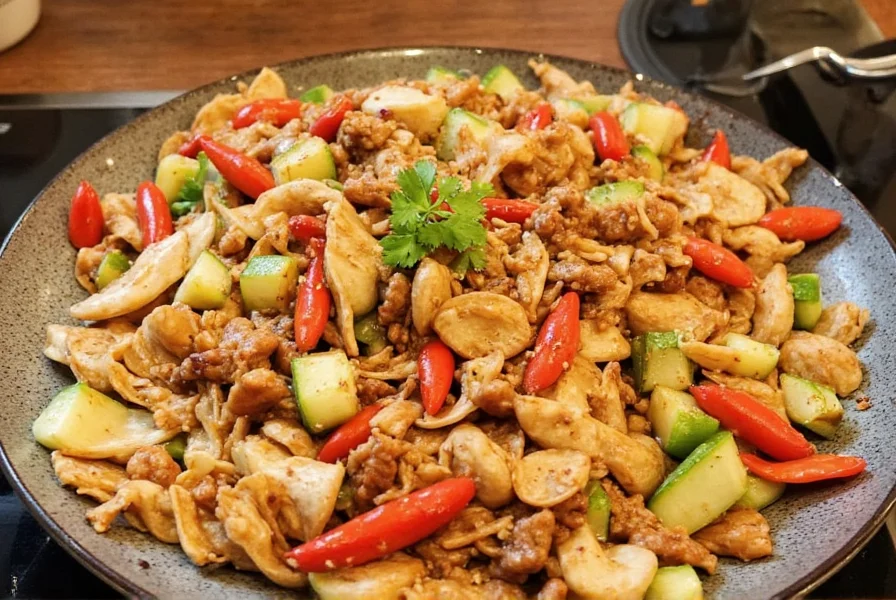 \n
\nFinal Thoughts: Season Like a Wok Whisperer
\n"Chinese cooking is about harmony, not perfection," says Chef Li. "Master these 10 seasonings, understand the flavor balance, and you'll create authentic dishes that sing. Taste as you go, trust your instincts, and remember—great Chinese food comes from understanding the ingredients, not just following recipes."
\n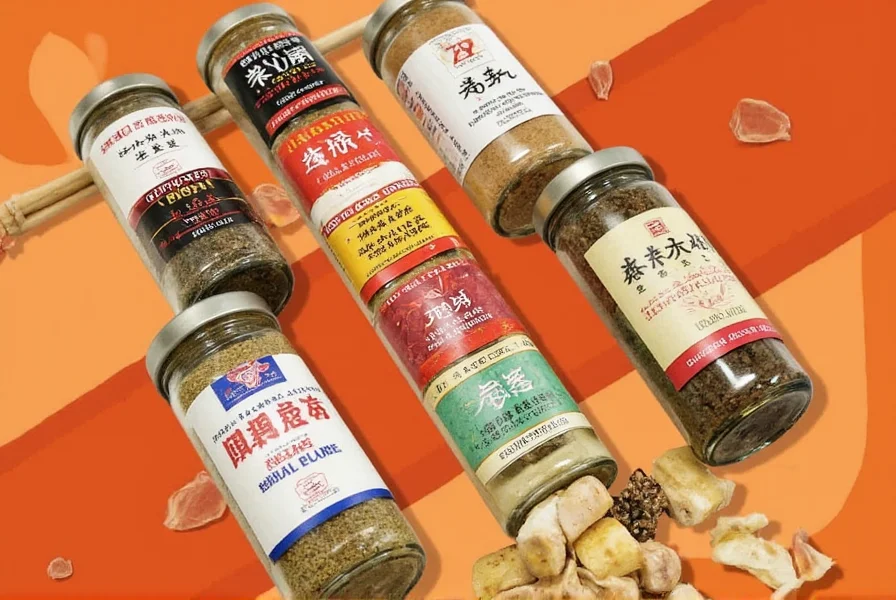 \n\n
\n\nFrequently Asked Questions About Chinese Seasonings
\nWhat are the essential Chinese seasonings every home cook should have?
\nAccording to Chef Li (Chinese Culinary Institute), the absolute essentials are soy sauce, ginger, garlic, sesame oil, and rice vinegar. These form the foundation of nearly all Chinese dishes. For authentic flavors, also include Shaoxing wine and five-spice powder. "Start with these five, and you can create 80% of classic Chinese dishes," says Chef Li.
\nCan I substitute regular soy sauce for light and dark soy sauce?
\n"Yes, but with limitations," says Chef Li. "Light soy is saltier and thinner, while dark soy is thicker, sweeter, and used primarily for color. If you only have one type, use light soy for saltiness and add a pinch of sugar for dark soy applications. However, for best results, having both varieties is recommended. As a professional chef, I always keep both in my kitchen."
\nWhat's the difference between Chinese five-spice powder and other spice blends?
\n"Chinese five-spice powder is unique because it balances all five fundamental flavors (sweet, salty, sour, bitter, umami) in Chinese cuisine," explains Chef Li. "It traditionally contains star anise, cloves, Chinese cinnamon, Sichuan peppercorns, and fennel seeds. Unlike Western spice blends that focus on heat or one dominant flavor, five-spice aims for harmony among multiple flavor dimensions. This is why it's irreplaceable in authentic Chinese cooking."
\nHow can I make my Chinese dishes taste more authentic?
\n"The key is layering flavors properly," says Chef Li. "Start with aromatics (ginger and garlic), toast your spices when appropriate, use Shaoxing wine for depth, and finish with sesame oil and a touch of acid like rice vinegar. Most importantly, balance the five flavors—don't just rely on soy sauce. Taste as you cook and adjust seasonings gradually rather than adding everything at once. This is how professional chefs create authentic flavors."
\nWhat's the most common mistake beginners make with Chinese seasonings?
\n"The most common mistake is overusing soy sauce," says Chef Li. "This makes dishes overly salty and one-dimensional. Other frequent errors include using old spices (which have lost potency), skipping the toasting step for whole spices, adding all ingredients at once rather than layering flavors, and forgetting the crucial element of acid to balance the dish. Remember that Chinese cooking is about harmony among multiple flavors, not just saltiness."
\nHow long do Chinese seasonings last, and how should I store them?
\n"Proper storage is crucial for maintaining flavor," says Chef Li. "Whole spices like Sichuan peppercorns and star anise can last 1-2 years when stored in airtight containers away from light and heat. Ground spices lose potency after 6-12 months. Soy sauce should be refrigerated after opening and lasts about 1 year. Sesame oil is best used within 3-6 months and should be refrigerated. Shaoxing wine can last indefinitely in the refrigerator. Always check for off smells or flavors before using older seasonings."
\n
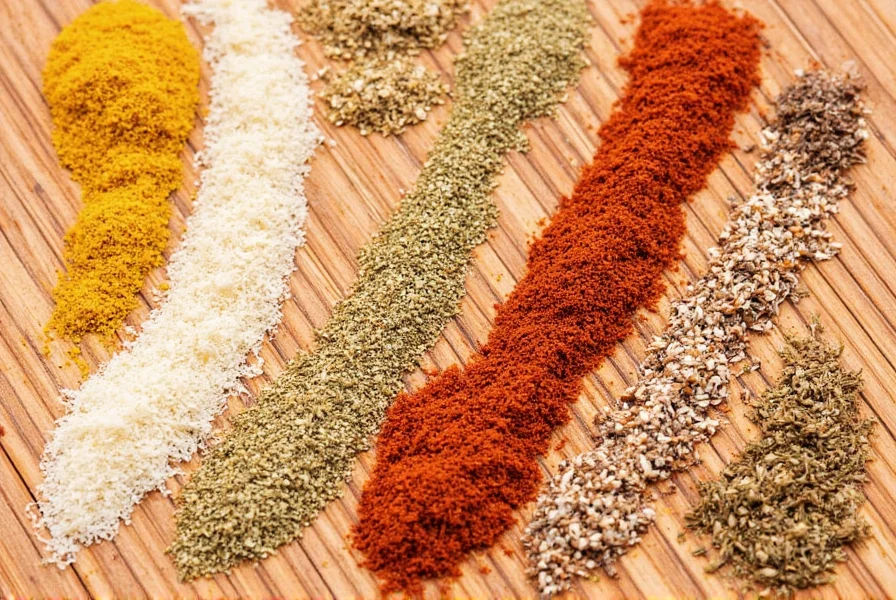









 浙公网安备
33010002000092号
浙公网安备
33010002000092号 浙B2-20120091-4
浙B2-20120091-4